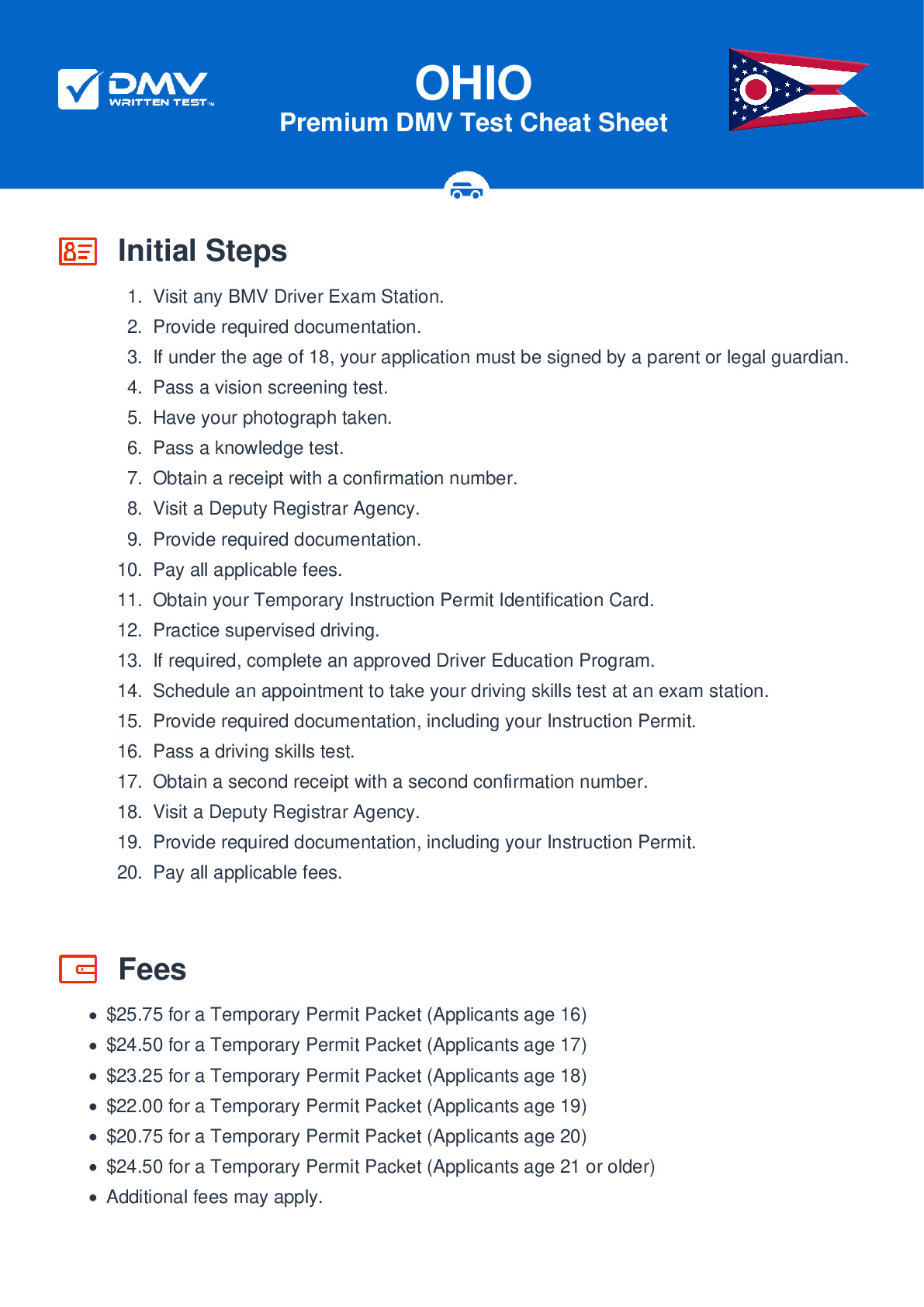2025 Ohio Permit Test 3
The following questions are from real DMV written tests. These are some of the actual permit questions you will face in Ohio. Each permit practice test question has three answer choices. Select one answer for each question and select "grade this section." You can find this button at the bottom of the drivers license quiz. For a complete list of questions and answers for Ohio please visit https://cheat-sheets.dmv-written-test.com/en/ohio/car.
Number of Tests
Number of Question
Passing Score
33. If you stop at a railroad crossing with more than one track:
Explanation
If you are stopped at a railroad crossing with more than one track, do not start moving as soon as a train passes. Wait until you have a clear view down all tracks before you start across. Even where there is only one track, do not start across immediately after a train passes; check again for another train that may be approaching.
34. When parallel parking, you should park within ____ inches of the curb.
Explanation
When parallel parking your vehicle, your wheels should be within 12 inches of the curb. Only park where you will not be disruptive to traffic and where drivers can clearly see your vehicle from every direction.
35. You are involved in an accident and another person is injured. You should:
Explanation
After an accident, do not move the injured unnecessarily. Unskilled handling can make serious injuries out of minor ones. Keep the injured warm until skilled help arrives. If there is severe bleeding, attempt to stop the flow of blood with direct pressure.
36. It is illegal for a person 21 years of age or older to drive with a minimum blood alcohol concentration (BAC) of:
Explanation
For drivers age 21 or older, it is illegal to operate a motor vehicle with a blood alcohol concentration (BAC) of 0.08 percent or higher. Driving while under the influence of alcohol is not only illegal, but dangerous.
37. You need to use extra caution when driving near a pedestrian using a white cane because:
Explanation
When driving near a blind pedestrian who is carrying a white cane or walking with a guide dog, you must slow down, yield the right-of-way, and then proceed with caution. Be prepared to stop your vehicle in order to prevent injury or danger to the pedestrian.
38. This sign means:

Explanation
This sign means that it is not safe for drivers to enter the indicated road or driveway from their current direction. If you come across one of these signs, you should immediately turn around and drive a different way.
39. The most common color of warning signs is:
Explanation
Most warning signs are diamond-shaped and yellow with black markings. These signs warn drivers about unexpected conditions that may not be readily apparent.
40. In bad weather, increase your following distance to:
Explanation




